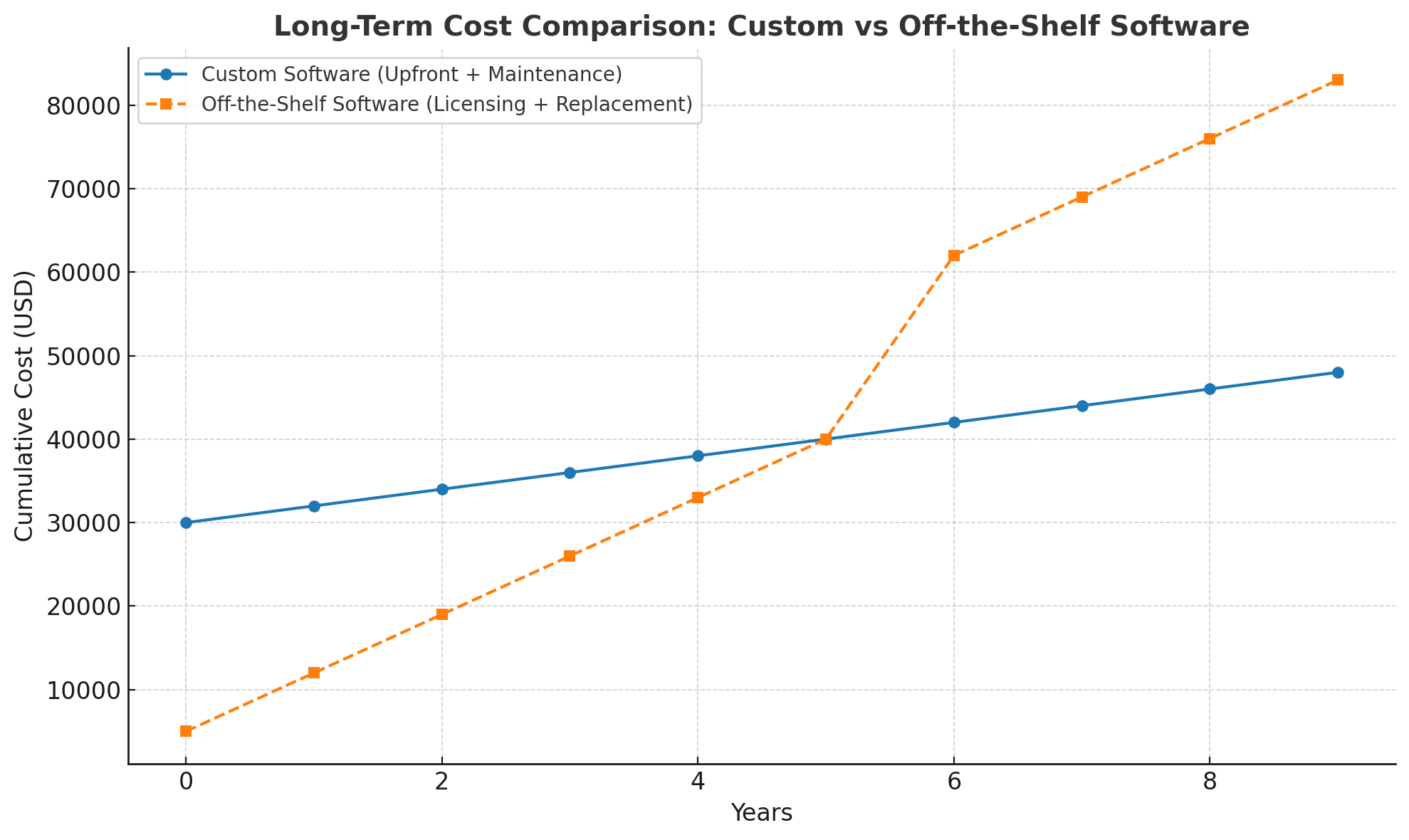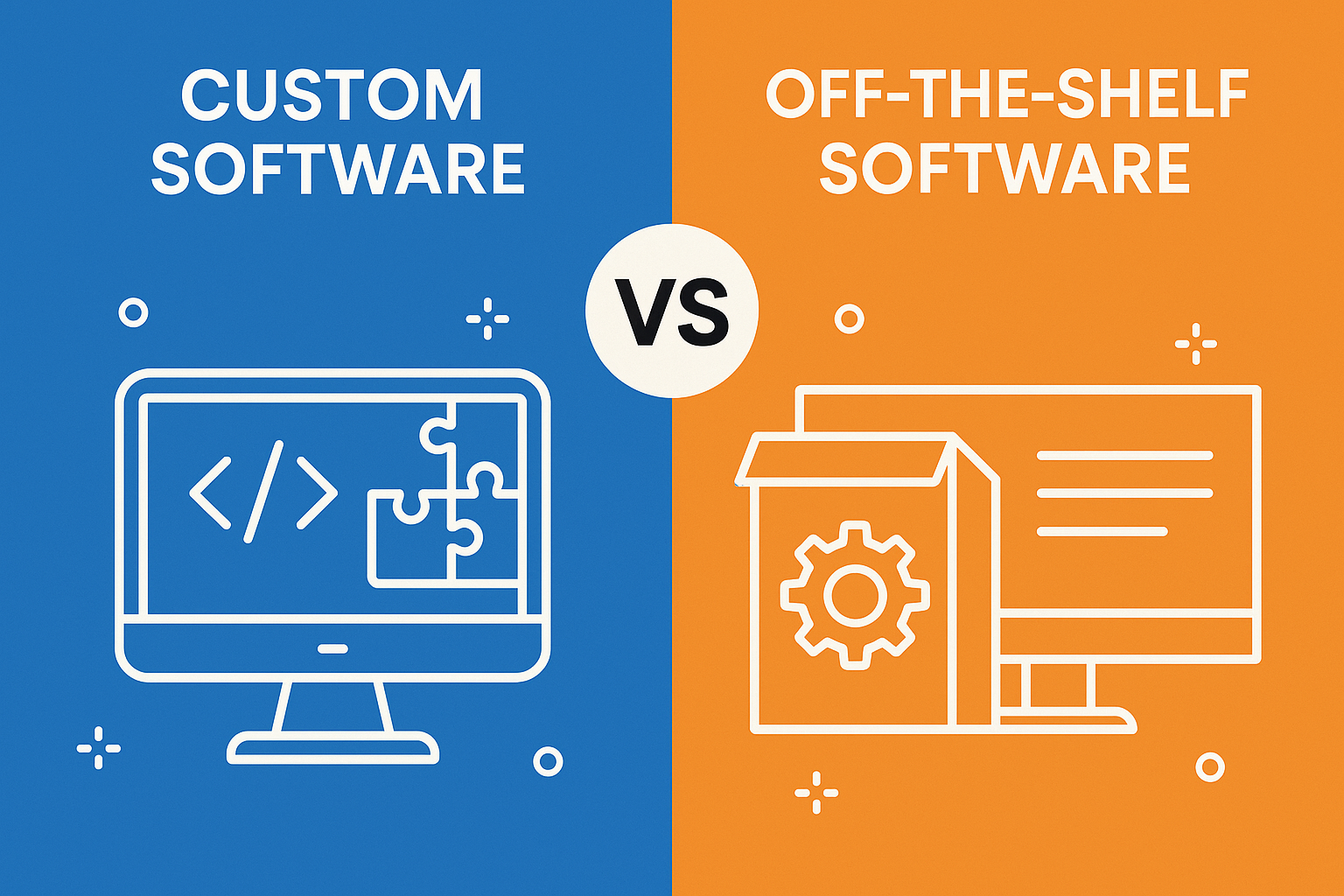In today's fast-moving digital world, businesses face a crucial decision: should they invest in custom-developed software or rely on off-the-shelf (COTS) solutions? While pre-packaged tools promise quick implementation and affordability, they often fall short when businesses need flexibility, scalability, or strategic differentiation.
On the other hand, custom software development offers tailored functionality designed to fit unique workflows, integrate seamlessly with existing systems, and evolve with organizational growth. In this article, we'll explore the 7 key benefits of custom software development, compare it against off-the-shelf alternatives, and highlight when each option makes the most sense.
1. Tailored Fit to Business Needs
Unlike off-the-shelf software, which is built to serve a broad audience, custom software is designed around your specific processes. This ensures that features directly align with business goals rather than forcing you to adapt workflows to fit generic tools.
📌 Example: A Kigali-based logistics company managing deliveries across Rwanda needed advanced route optimization to handle rural road networks and traffic variations. Off-the-shelf solutions couldn’t account for challenges like poor road data or mobile-money-based proof of delivery. A custom system allowed them to streamline routes, reduce fuel costs, and improve delivery times for customers in both urban and rural areas.
2. Scalability and Flexibility
As businesses grow, their software needs often change. Custom software can be scaled up with additional features, modules, or integrations to match evolving requirements.
In contrast, off-the-shelf solutions may require expensive upgrades, third-party plugins, or even a complete system switch when business needs outgrow the product.
3. Greater Control and Ownership
With custom development, your business owns the source code. This means full control over updates, integrations, and long-term planning—without depending on a vendor's roadmap.
Off-the-shelf software often comes with licensing restrictions, vendor lock-in, and limited influence on product evolution.
4. Seamless Integration
Most organizations already rely on multiple systems (CRM, ERP, accounting tools, etc.). Custom software can be built to integrate seamlessly with these existing systems, reducing duplicate data entry and minimizing errors.
In contrast, packaged software may require costly workarounds or middleware solutions for integration.
5. Enhanced Security
Custom software allows businesses to implement security protocols tailored to their specific risks, making it harder for attackers to exploit common vulnerabilities.
Off-the-shelf solutions, being widely used, are more attractive targets for cyberattacks, and businesses are dependent on vendors to release patches.
6. Long-Term Cost Efficiency
While upfront costs for custom development are higher, businesses often save in the long run by avoiding:
- Recurring license fees
- Paying for unnecessary features
- Costs of switching systems when off-the-shelf tools become obsolete
Over time, the ROI of custom software can surpass that of packaged products.

7. Competitive Advantage
Custom software is designed with your unique workflows and customer needs in mind. This creates differentiation in the marketplace, as competitors using generic tools can't replicate the same efficiency or innovation.
Strengths of Off-the-Shelf Software
To provide balance, off-the-shelf solutions do have benefits, particularly for small businesses or startups:
- Lower upfront costs
- Quick deployment
- Proven reliability with established support networks
- Standardized workflows for rapid stabilization
Quick Comparison Table
| Criterion | Custom Software | Off-the-Shelf (COTS) |
|---|---|---|
| Upfront Cost | High | Low |
| Time to Deploy | Long (months to years) | Immediate |
| Fit to Business Needs | Perfect alignment | Generic, one-size-fits-all |
| Scalability & Flexibility | High — evolves with business | Limited—may require upgrades or replacements |
| Control & Ownership | Full ownership, control | Vendor-locked, limited roadmap influence |
| Integration Capability | Custom-tailored | May require extra tools or workarounds |
| Security | Tailored security | Shared vulnerabilities across users |
| Long-Term Costs | Lower (no recurring fees, no wasted features) | Ongoing fees, potential replacement costs |
| Competitive Advantage | High — unique differentiation | None — shared by many |
When to Choose Custom vs Off-the-Shelf
✅ Custom Software is best for businesses that:
- Have unique workflows or complex requirements
- Need tight system integrations
- Value security and control
- Plan for long-term scalability
✅ Off-the-Shelf Software works best when:
- Budget is limited
- Immediate deployment is required
- Standard workflows suffice
- Vendor-provided support is a priority
Conclusion
The decision between custom software development and off-the-shelf solutions comes down to business priorities.
If your business needs speed, affordability, and standardization, off-the-shelf may suffice.
But if you require scalability, control, advanced security, and a competitive edge, custom software is the smarter investment.
In the end, the best choice is one that aligns with your strategic goals, budget, and growth trajectory.
Ready to Explore Custom Software Development?
At CoreCrest, we specialize in creating tailored software solutions that perfectly fit your business needs. Let's discuss how custom software can transform your operations and give you a competitive advantage.
Get Started Today